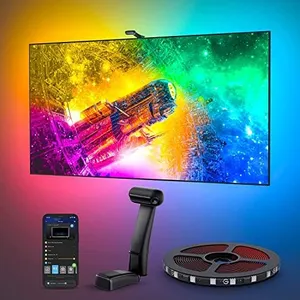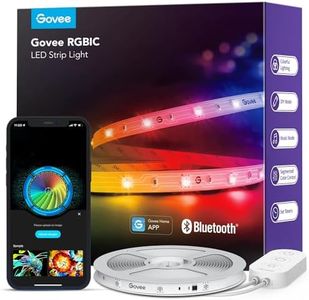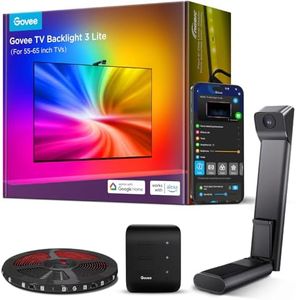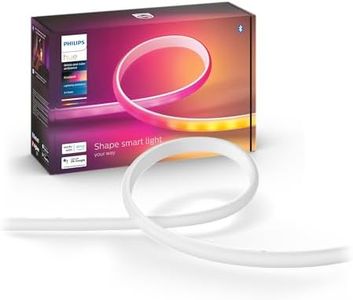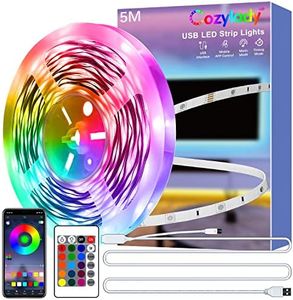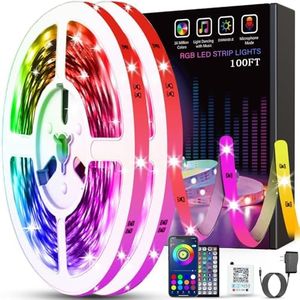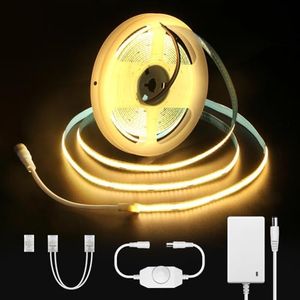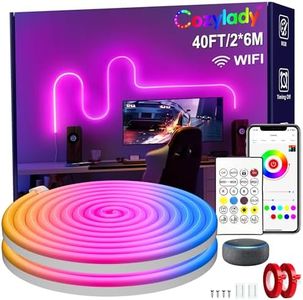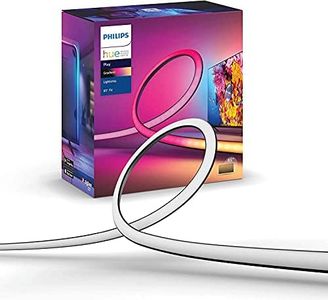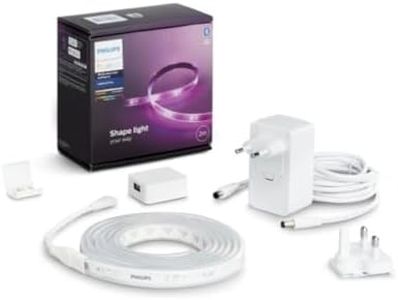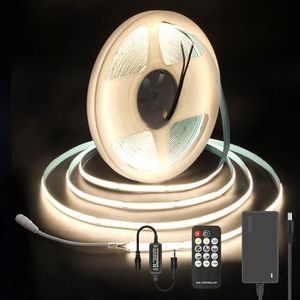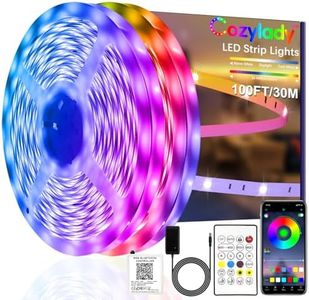We Use CookiesWe use cookies to enhance the security, performance,
functionality and for analytical and promotional activities. By continuing to browse this site you
are agreeing to our privacy policy
10 Best Led Lightstrips
From leading brands and best sellers available on the web.Buying Guide for the Best Led Lightstrips
Picking LED light strips can be a fun way to add atmosphere and color to your space, whether for decorating your living room, adding accent lighting to your desk, or creating a mood in your bedroom. The key to choosing the best LED light strips is to think carefully about your needs: What space are you lighting? Do you need certain colors or effects? How important is installation and control convenience? By focusing on the features that matter most for your space and style, you'll find the light strips that best fit your purpose.Brightness (Lumens)Brightness refers to how much light the LED strip gives off, usually measured in lumens. This is important because it determines how well the strip will illuminate your area. Low brightness (under 500 lumens per meter) creates a gentle glow, suitable for background or accent lighting. Medium brightness (around 500-1000 lumens per meter) is good for task lighting or highlighting features like shelves. High brightness (over 1000 lumens per meter) is best for places that need strong light, like workspaces. Think about your intended use—softer lighting for ambiance, brighter for work—and choose accordingly.
Color (Single-Color vs. RGB vs. RGBW/RGBCCT)LED strips come in options for single-color (like just warm white), RGB (Red, Green, Blue for many color choices), or RGBW/RGBCCT (which add a separate white or adjustable color temperature LEDs). Single-color is great for simple, consistent lighting. RGB lets you pick from a rainbow of colors for dynamic effects. RGBW or RGBCCT offer even more flexibility, allowing both colored and pure white light or adjustable warmth. Consider whether you'll want to change the mood with colors or need only basic lighting, and choose the strip type accordingly.
Water Resistance (IP Rating)The IP rating tells you how protected the strip is against dust and water. For dry indoor settings like bedrooms or living rooms, lower ratings (IP20) are usually fine. If you plan to use the strip in kitchens, bathrooms, or outdoors, look for higher ratings (IP65 or above) to guard against splashes or rain. Always select a strip based on how exposed it will be to moisture or dust in your chosen location.
Length and Cuttable SectionsStrips come in various lengths, and often, you can cut them at marked segments. Make sure the total length covers your intended area, and check if the strip can be trimmed or extended with connectors. Short segments make it easy to fit odd shapes or sizes, while longer non-cuttable sections are better for big, uninterrupted runs. Measure your space before buying and visualize your layout so you select a suitable length and flexibility.
Power Source and VoltageLED strips run on different voltages (commonly 5V, 12V, or 24V). Lower voltage strips (like 5V) are typically safer and easier for short runs or USB-powered setups, but may dim over long distances. Higher voltage (like 24V) is more suitable for longer strips with consistent brightness. Also, consider the type of plug or power adapter needed—some require a special driver. Match the voltage and connector to your planned setup and be sure your power source can safely support it.
Control Options (Remote, App, Voice)Control methods greatly affect convenience. Basic remote controls work for simple on-off and color changes. Smartphone apps connect via Bluetooth or Wi-Fi, adding scheduling, automation, and sometimes smart home integration. Some strips even work with voice assistants. Choose something you'll find easy to operate and, if you want smart features or remote control from anywhere, look for app compatibility.
Installation Method (Adhesive, Clips, Channels)Most LED strips use a peel-and-stick adhesive backing for quick installation, but some come with mounting clips or fit inside special channels for a cleaner look and better heat management. Adhesive works on smooth, clean surfaces, while clips or channels are better if you want a more permanent installation or need to install on rougher surfaces. Think about your surface and whether you might want to remove or reposition the strips later.
